The hamburger was not an American invention. Nor German. Ground meat has been around forever and the cornerstone of sausage production for centuries.
The internet and many books talk about how Russian Tatar soldiers (a.k.a. Tarters), the infamous Mongolian hordes under Ghengis Khan, carried beef under their saddles where it was pulverized, and cite that as the beginning of the concept. Because they had no time to cook it, they ate it raw. But there is no evidence to support either myth, and a smushed rancid horsey steak is not a hamburger by any definition. It is questionable if a tartar could have survived many of these pathogen laden meals.
Chopped or scraped meat has been around probably since soon after man began eating meat. Shaping it into a patty or stuffing it in a casing is the story of sausage, mentions of which go back to early Greece. Homer’s Odyssey contains mentions of sausage.
The Hamburg Steak, a ground beef sausage served without a casing on a plate, is the most direct ancestor of the modern hamburger, and it may have first been made in Hamburg, Germany in the 1300s. Nobody’s left to say for sure.
In Hannah Glasse’s 1805 cookbook “The Art of Cookery Made Plain and Easy; Excelling any Thing of the Kind ever yet published” there is her recipe for Hamburgh Sausages. It is beef, minced small, mixed with beef fat, pepper, cloves, nutmeg, garlic, white wine vinegar, bay salt, common salt, red wine, and rum. The mix is then stuffed into a large gut casing and hung in a chimney and smoked with sawdust for a week to 10 days until dry. She says “they are very good boiled in peas pottage, and roasted with toasted bread under it, or in an amlet.”
In the 1860s, a New York physician, Dr. James Henry Salisbury, had success treating diarrhea among Yankee soldiers with grilled pulped rump steak patties, and he and his disciples popularized the Salisbury Steak treatment, which happened to taste good too. In the 1880s he introduced the Salisbury Steak, patties of beef scraped from pounded steaks, seasoned and mixed with onion, then simmered or grilled. He prescribed it three times a day as a treatment for all manner of digestive ailments. It caught on and appeared in numerous menus and cookbooks. I have written more about Salisbury Steaks, and shared a recipe, here.
The hamburger sandwich, a cooked ground beef patty between two slices of bread, seems to be an All-American derivative of Hamburg and Salisbury Steaks, and there are several credible claims to its invention, each of which is also questionable. We may never know who was the real inventor.
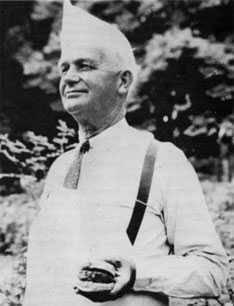
1885 – Charles “Hamburger Charlie” Nagreen (above). Born in Wisconsin in 1870, at age 15, in 1885, Nagreen was selling meatballs at the fair in Seymour, WI. He smashed a meatball and placed it between two slices of bread so fair goers could stroll the midway and eat at the same time. He named it after the Hamburg steak, the ground beef platter popular with the many German settlers in the area. Nagreen came back to the Seymour Fair, and others, for 65 years. Seymour now calls itself Home of the Hamburger and the fair celebrates the handheld meal every year. Evidence to support this claim is thin.
1885 – The Menches brothers. According to legend, two brothers from Ohio made a living as vendors at fairs, and they specialized in sausages cooked on a griddle. In 1885 they were at the Erie County Fair in Hamburg, NY, also called the Hamburg Fair, they ran out of sausage and all they could buy from the local butcher was some chopped beef which they griddled and sold on bread. Alas, there isn’t much evidence to support this legend, either.
Late 1880s – “Uncle Fletch” Davis. Fletcher Davis of Athens, TX, laid claim to fame by bringing hamburger sandwiches to the 1904 St. Louis World’s Fair, where they were very popular. Local legend says he sold them at his cafe on the Henderson County courthouse square as early as the late 1880s. A report in the New York Tribune from the Fair described a hamburger sandwich, but did not name the vendor, and like Nagreen and the Menches brothers, only legend supports his claim.
1900 – Louis Lassen at Louis Lunch. Lassen sold steak sandwiches in the heart of New Haven, CT, and made ground beef steaks and meat loaf from the trimmings. Legend has it that one day in 1900 a man rushed into the small luncheonette and ordered a quick meal that he could eat on the run. Lassen slapped a broiled ground beef patty between two slices of bread, possibly toast, and sent him on his way. Before long, it was on the menu.

Established in 1895, Louis Lunch is still in business in the original tiny building, which was moved to a new location nearby in 1975. Great grandson Jeff Lassen is behind the counter many days. Each hamburger is hand formed from beef ground fresh daily, cooked in the original 1898 vertical broilers with a flame on either side and served between two slices of white bread toast. A sign on the wall says “This is not Burger King. You don’t get it your way. You take it my way or you don’t get the damn thing.”
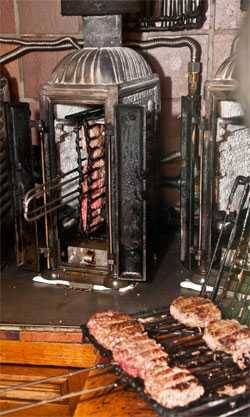
His way would be a spreadable cheese sauce on the bottom slice, a slice of fresh tomato, and a slice of onion. Louis’ grandson Ken once said “no true connoisseur would consider corrupting the classic taste with mustard or ketchup.”
1891 – Oscar Weber and Fannie Mae Bilby. By July 4, 1891, the family party was getting out of hand. Oscar and Fannie Mae were expecting more than 100 to drop by their Angus cattle farm in Bowden, OK, which was still in Indian territory. To stretch his dollar, he ground up beef, formed it into patties, and Fannie Mae made “big, buttered yeast buns to sandwich the patties” according to a report in the Tulsa World. This seems to be the first recorded instance of the bun enveloping the burger.
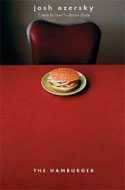
Now if you’re a purist, like the estimable Josh Ozersky, author of the fascinating book The Hamburger, it is the bun that makes the hamburger. He argues that Hamburger Charlie Nagreen, the Mendes boys, Uncle Fletch, and Louis Lassen all made nothing more than sandwiches. “To admit ground beef on toast as a hamburger is to make the idea of a ‘hamburger’ so loose, so abstract, so semiotically promiscuous as to have no meaning.” So there. If you buy Ozersky’s argument, and if the story of Uncle Web is true, then July 4, 1891 may be the seminal moment.
But wait. There’s more. In order to cook his feast, Uncle Web forged a 3″ thick pig iron griddle and suspended it above hot embers. He carved his initials and the date in the masterpiece. According to Tulsa World, “The Bilby backyard burger and root beer parties grew so big and were so popular that in 1933 Oscar opened a hamburger and root beer stand at what is now 38th Street and Peoria Avenue. He called it Weber’s” and that very same griddle is still used today by his great grandson, Rick Bilby at Weber’s Root Beer Stand.
Fakelore
In his definitive book Hamburger: A Global History, a culinary historian Andy Smith uncovers hamburger “fakelore”. He debunks the myths that the Tartars invented it, that it first appeared on a menu at Delmonico’s in NYC in 1834, that Ray Kroc founded McDonald’s, and the first Mickey D’s is in Desplaines, IL. All untrue.

20th Century Express
As the Great Plains swelled with beef and Chicago Stockyard meat processors like Swift and Armour made the fattening, slaughter, and butchering an assembly line process, with the invention of refrigerated rail cars and the laying of miles of new track, the price and popularity of beef made it the All-American dish.

The US Patent Office was swamped with inventions for meat choppers and grinders in the late 1800s for sausage and ground beef production. Before long, cheap ground beef, made from bulls, old steers, trimmings, tough cuts, and scraps, became the working man’s dish of choice. Tasty, and packed with calories, ground beef fueled the workers in the steel foundries, the assembly lines, the housing boom, and the highway boom.
But it was not until 1921 in Wichita, KS, that the hamburger began its ascent to American icon with the opening of the first White Castle restaurant. The shiny white and stainless steel interior with spotless uniforms combatted the fear created by Upton Sinclair’s horrifying inside portrait of the Stockyards, “The Jungle”. The owners, Walt A. Anderson and Edgar Waldo “Billy” A. Ingram, started opening other White Castles. There were imitators.
Then, in 1927, the Model A Ford started rolling off the assembly line making it easy and convenient for people to travel to dine. The convergence of hamburger and automobile opened the doors to fast food franchises and eventually the hegemony of McDonald’s, founded by Dick and Mac McDonald in 1954 and taken national by Ray Kroc in 1955.
Hamburgers have long been on the menus of restaurants with waiters and waitresses from cafeterias, to cafes, to upscale restaurants, but since 2005 or so there seems to be a tidal wave of burger-centric restaurants aimed at elevating the lowly burger to gourmetdom. Anybody complaining? Didn’t think so.
Starrett’s Mechanical Hasher

Patented on May 23, 1865 by Leroy Starrett of Newburgport, MA, the mechanical food “hasher” sold for $5. A crank raised and lowered a fixed chopping blade while a wooden bottom bowl rotated.
Advertisements promoted its use for the new Salisbury Steak as well as mincemeat pie, a popular Christmas pie that had beef, heart, raisins, and apples.
It was pitched as “One of the most useful and greatest labor saving inventions…” and “no housekeeper can afford to be without one, while for hotels, restaurants, boarding houses and bakeries they are absolutely indispensable.” The ads claimed that it reduced the time to make a batch of mincemeat from up to three hours, a child of six could do it in “5 to 15 minutes with the greatest ease.”
Before long the concept was super-sized. Below is a meat chopper circa 1900.
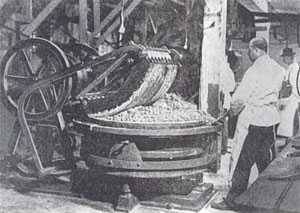
National Hamburger Month
May is National Hamburger Month and nobody knows whose idea it was.

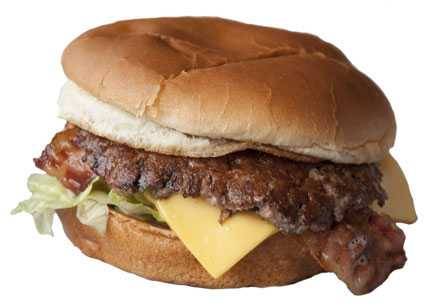

High quality websites are expensive to run. If you help us, we’ll pay you back bigtime with an ad-free experience and a lot of freebies!
Millions come to AmazingRibs.com every month for high quality tested recipes, tips on technique, science, mythbusting, product reviews, and inspiration. But it is expensive to run a website with more than 2,000 pages and we don’t have a big corporate partner to subsidize us.
Our most important source of sustenance is people who join our Pitmaster Club. But please don’t think of it as a donation. Members get MANY great benefits. We block all third-party ads, we give members free ebooks, magazines, interviews, webinars, more recipes, a monthly sweepstakes with prizes worth up to $2,000, discounts on products, and best of all a community of like-minded cooks free of flame wars. Click below to see all the benefits, take a free 30 day trial, and help keep this site alive.
Post comments and questions below
1) Please try the search box at the top of every page before you ask for help.
2) Try to post your question to the appropriate page.
3) Tell us everything we need to know to help such as the type of cooker and thermometer. Dial thermometers are often off by as much as 50°F so if you are not using a good digital thermometer we probably can’t help you with time and temp questions. Please read this article about thermometers.
4) If you are a member of the Pitmaster Club, your comments login is probably different.
5) Posts with links in them may not appear immediately.
Moderators